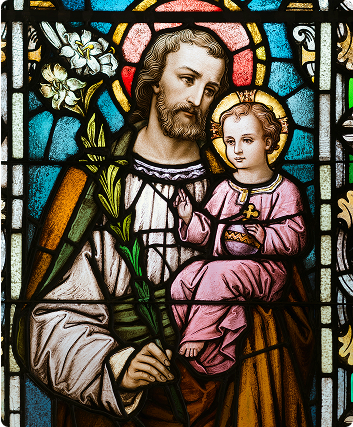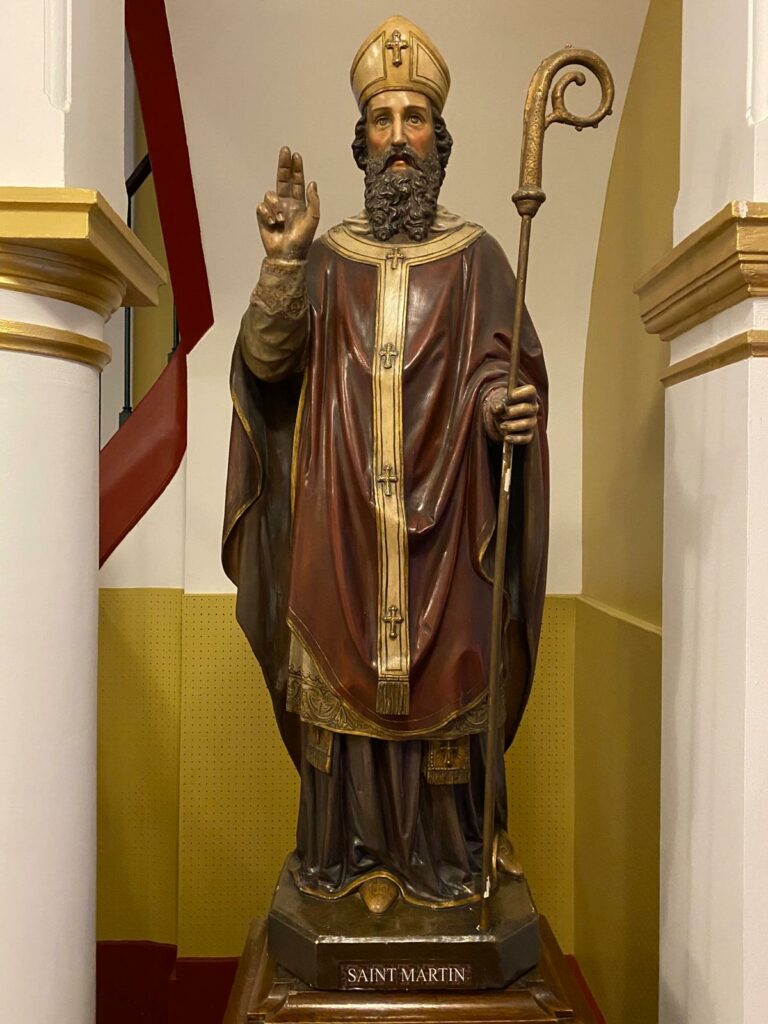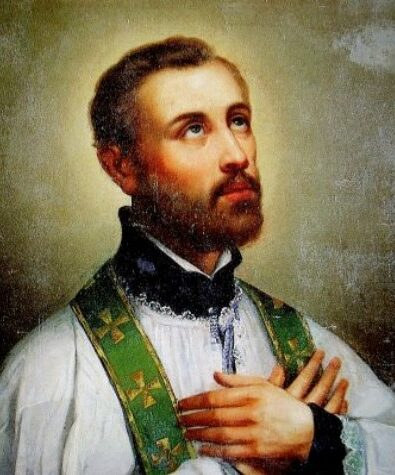Patron saints of the Congregation
Following the example of Blessed Anne-Marie Javouhey, we confidently turn to Saint Joseph, our Protector and model of interior life. We pray especially to the Patron Saints of the Congregation: Saint Teresa of Avila and Saint Martin, Saint Francis Xavier and Saint Peter Claver. From them we learn to unite intimacy with the Lord and courageous zeal in the service of the Mission. (Ordinances of the General Chapter, 2000)

Saint Joseph
Anne-Marie chose Saint Bernard as the patron saint of the first chapel consecrated in Châlon in 1807, reflecting her relationship with the Trappist monk Don de Lestrange and her experience as a novice at La Valsainte.
But the priest who was celebrating the first Mass remarked: "Why not Saint Joseph? Saint Theresa always put her houses under the patronage of Saint Joseph! ... And my name is Joseph!
This reminded her of the great Saint's revelation about her vocation, and Anne-Marie accepted on the spot. From then on, Saint Joseph was to become the Patron Saint and Providence of the Congregation. His feast is solemnly celebrated on 19 March.


Saint Teresa of Avila
Thérèse was the great reformer of Carmel who worked to re-establish the Carmelite Rule in fidelity to its origins. Throughout her life, she re-established several reformed houses of the Carmelite Order throughout Spain and, together with Saint John of the Cross, worked on the reform of the male Carmelite Order.
It is said that Saint Theresa appeared to young Anne, a postulant at the Convent of Charity in Besançon, when she was going through a period of struggle to find out God's will for her. Thérèse, showing her people of different colours, said to her: "These are the children God is giving you. She revealed to Nanette that she would be the founder of a congregation to serve these people.
The Church celebrates the feast of Saint Theresa on 15 October. Saint Theresa teaches everyone to seek God in all things, to unite contemplation and action. Under her protection and that of Saint Martin, Saint Francis Xavier and Saint Peter Claver, the Congregation pursues its mission in the world "so that the whole human race may constitute a single People of God, gathered together in the Body of Christ, built into a single temple of the Spirit". (Rule of Life p 15)
Saint Martin de Tours
In the 18th and early 19th centuries, Saint Martin was a very popular saint in France, particularly in Burgundy - where Anne-Marie Javouhey was born - perhaps because he was the patron saint of winegrowers and soldiers alike.
Born of pagan parents in Hungary in 316, he became a soldier because his father was an army officer at the time. Later he became a Christian and a conscientious objector. The charges against him were dropped and Martin was free to become a monk. In 360 he settled in Gaul (France) and was soon joined by his disciples, with whom he founded the first monastery in Gaul. In 371, the people proclaimed Martin Bishop of Tours. He served as Monk-Bishop and brought many pagans to the faith.
He died in 397. The biography of Saint Martin, written by his friend Sulpice Severe, recounts the many works of mercy and prodigious deeds that made him such a popular saint. In iconography, he is usually depicted on horseback, sharing his cloak with a poor man. Anne-Marie Javouhey found in this saint both a model for evangelisation and a protector as she set about saving the faith from the destructive influences of the French Revolution.
The fact that she was baptised on 11 November, the day on which the Church celebrates Saint Martin, meant that she gave him even greater prominence. It was also the day of her first consecration to God at the age of 19.
Saint Francis Xavier
Born in Navarre on 7 April 1506, Saint Francis Xavier died on the island of Sancian off the coast of China on 3 December 1552. He was one of the first members of the Society of Jesus (the Jesuits).
Saint Ignatius sent him to evangelise the Indies in 1541. He devoted his entire life to bringing the Gospel to the people of India and Japan. It is astonishing to see one man, in such a short space of time (from 6 May 1542 to 3 December 1552), visit so many countries, cross so many seas, preach the Gospel to so many nations and bring so many people to the Gospel.
His zeal for proclaiming the Word has never been equalled. Considered to be the greatest missionary since the time of the Apostles, he was a stimulating model for the missionary zeal of Anne-Marie Javouhey and her daughters. Francis Xavier was canonised at the same time as Saint Ignatius.
The Church celebrates it on 3 December.
Saint Pierre Claver
1580-1654 - Saint Peter Claver, a Spanish Jesuit missionary in Latin America, is known as the "Apostle of the West Indies" and "Slave of the Slaves".
Haunted by the call to go where he was really needed, Claver abandoned his theological studies without completing them and in 1610 went to Cartagena, New Granada (now Colombia).
In his Profession he stipulated that "he would never accept any inferiority among African slaves", and so that there should be no doubt about it, he proclaimed himself their slave, adding to his signature "ethiopium semper servus" (forever Servant of the Ethiopians/Africans).
For the remaining 38 years of his life, Claver lived in Cartagena, one of the most important Caribbean ports in Latin America from which slaves were imported! He had no social programme, but simply oriented his life towards the basic needs of the slaves, who were often sick, who arrived on the coasts of America.
He was not a "revolutionary" priest, aiming to change society; he simply cared about slaves and urged slave masters to show humanity. He died of the plague on 8 September 1654 and was canonised in 1887. Three years later he was declared Patron Saint of missionaries working among slaves, which is why he was chosen as a special Patron Saint by the Sisters of Cluny.
We celebrate his feast day on 9 September.



